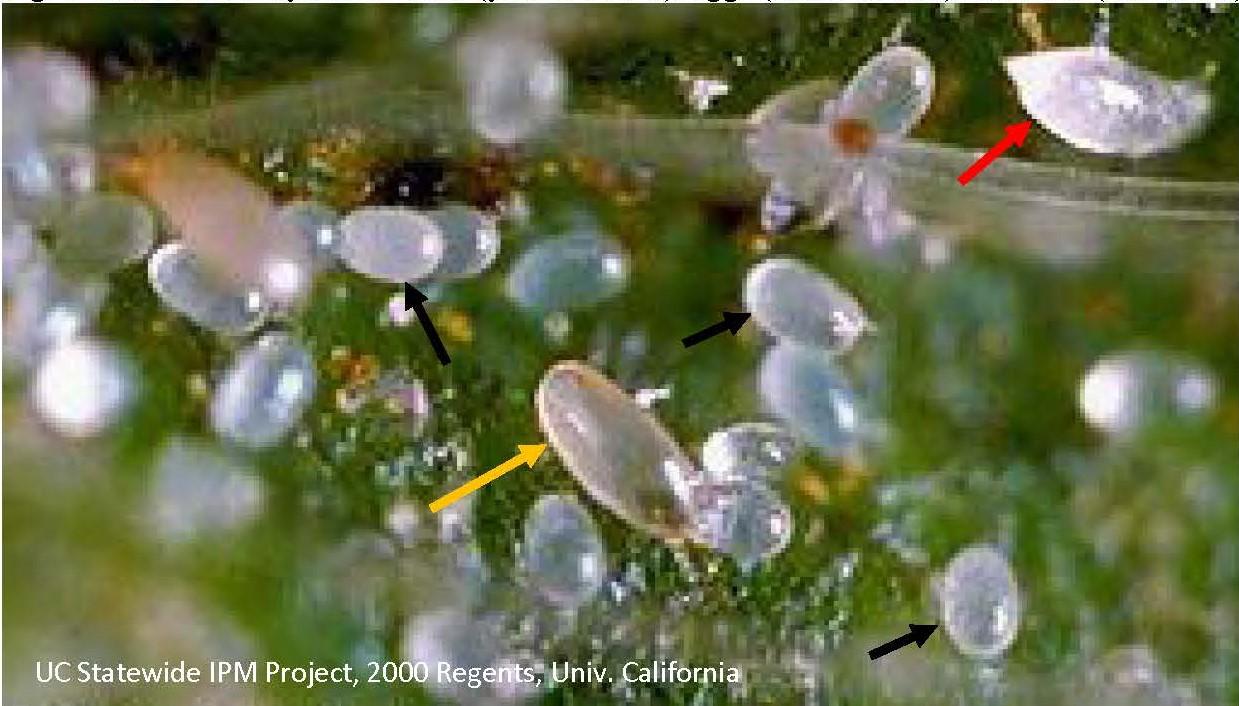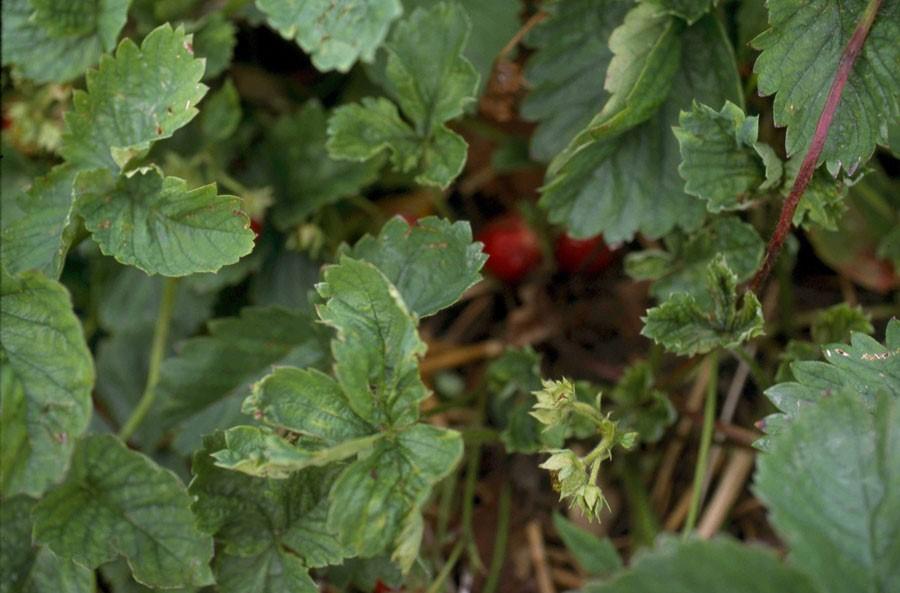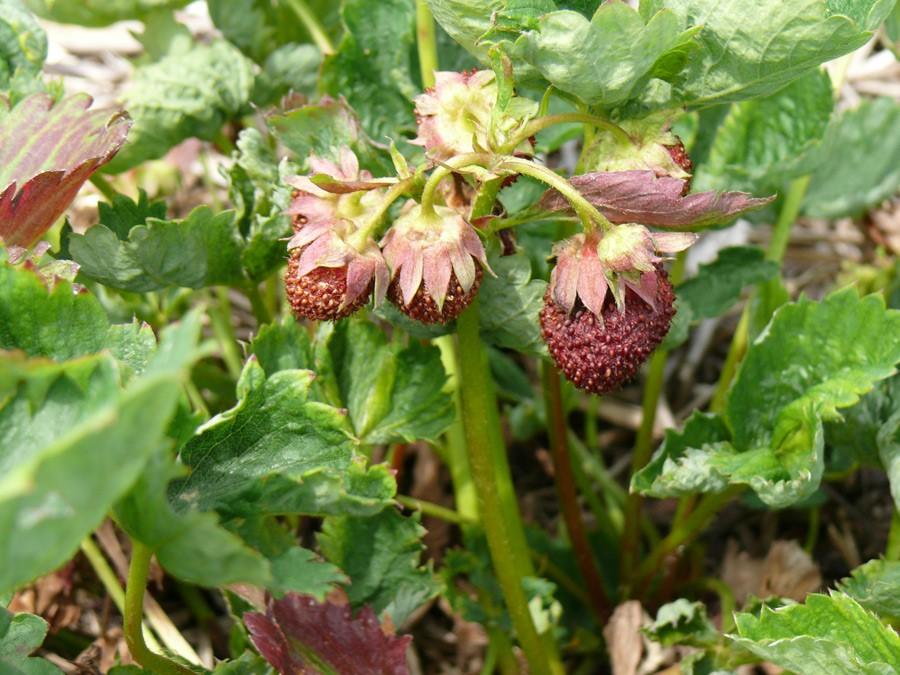Cyclamen Mites Found in Strawberries
This has been a ‘mitey’ spring so far with two spotted spider mites, broad mites and now cyclamen mites (by Bob Rouse) being found. Usually cyclamen mites (Phytonemus pallidus) cause much of their damage to bedding plants, but they can cause significant problems in strawberries too. Adult cyclamen mites are usually never seen as they are only a quarter of a mm long and a 20X hand lens or dissecting microscope is needed to see them. And unlike two spotted spider mites that prefer dry conditions, cyclamen mites thrive in humid conditions and is why they are primarily a greenhouse pest.
Adult mites are oval-shaped and a glossy creamy orange (fig. 1) with males being smaller than females. The hind legs of females are thread-like and in males are pincerlike (the male uses these hind legs to transport female pupae to new locations on the plant). The eggs are translucent and comparatively large, about ½ the size of an adult (fig. 1). Masses of eggs in leaf crevices can be so numerous that they look like tiny piles of salt. Female adults overwinter in strawberry crowns and also can be present on transplants. Female mites lay their eggs on strawberry leaves that hatch into tiny, white, six-legged larvae (fig. 1). The entire life cycle of the cyclamen mite is less than 3 weeks and therefore populations can build quickly. Although there are multiple generations each year, populations tend to peak in early spring and again in late summer.
Cyclamen mites use their piercing-sucking mouthparts to feed on plant material. Symptoms of infestation can be found throughout the plant. However, at low numbers cyclamen mites can usually be found along the midvein of young, unfolded leaves and under the calyx of newly emerged flower buds. As numbers increase mites can be found anywhere on the plant. The infested leaves will appear stunted and crumpled (fig. 2), while flowers wither and die and fruit becomes shrunken with protruding seeds (fig. 3). By the time these symptoms appear, it is too late to limit damage, so cyclamen mites should be managed preventively. Treatments should be applied when 1 leaf in 10 shows cyclamen mite infestation.
Growers should watch for infested deformed leaves starting when new buds emerge from the crown and continuing until harvest. Older fields will most likely have more problems. In order to be sure of the presence of cyclamen mite, you need to examine the newest leaves in the crown, specifically the mid vein and lower part of a leaf where it joins the petiole. Magnification (20-40X) is recommended for confirmation of cyclamen mites.
Early detection of cyclamen mites is essential in achieving best control, which means detection early in the growing season when foliage is nominal. Thorough spray coverage of the crown leaves is important for good control, so high volumes of water are needed. Horticultural oils can be used if temperatures are below 88o F. Agri-Mek SC or Portal XLO also can be used for mite control. Predatory mites can be used and work best if cyclamen mite populations are small and confined to scattered hot-spots in a field.


